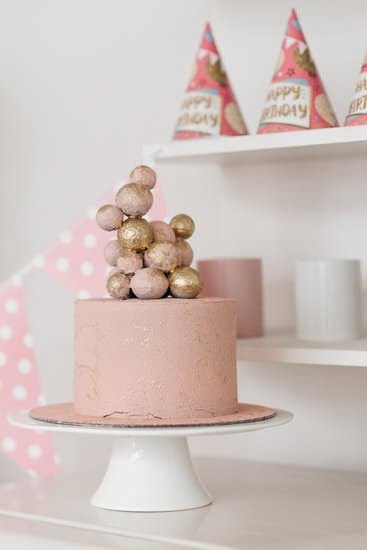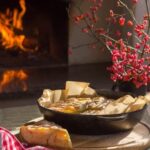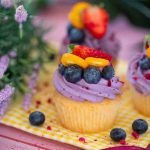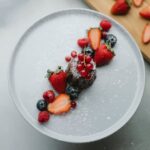Cake decoration is an art that has been celebrated in various cultures around the world for centuries. In Urdu culture, cake decoration holds a special place, adding beauty and vibrancy to celebrations and festivities. One of the key elements in this art form is the cream used for decorating cakes. This article will guide you on how to make cream for cake decoration in Urdu, ensuring that you have all the necessary knowledge and techniques to create stunning cakes.
Cream plays a crucial role in cake decoration as it provides smoothness, texture, and flavor to the final product. Whether it’s smoothly coating a cake with buttercream or creating intricate designs using whipped cream, choosing the right type of cream can elevate your cake from ordinary to extraordinary.
Urdu culture celebrates occasions such as weddings, birthdays, and religious festivals with grandeur. In these celebratory events, cakes take center stage as a symbol of joy and indulgence. The art of cake decoration has become increasingly popular in Urdu culture, with creative designs inspired by traditional motifs and vibrant colors enchanting both young and old.
In this article, we will delve into the world of cake decoration in Urdu, focusing particularly on how to make cream for this purpose. Get ready to learn about different types of creams suitable for cake decoration, gather essential ingredients needed for creamy perfection, and embark on a step-by-step journey towards creating beautiful works of edible art. Let’s unveil the secrets behind making delectable cream for cake decoration in Urdu.
Understanding the Different Types of Cream for Cake Decoration
Cream is an essential element in cake decoration, as it not only adds a luscious and creamy texture to the cake but also serves as a canvas for intricate designs and decorations. In Urdu culture, cake decoration holds great significance, often becoming the centerpiece of joyous celebrations. To bring out the best in your cake decorations, it is important to understand the different types of cream that can be used.
One popular type of cream for cake decoration is buttercream. Buttercream is made by beating butter and sugar together until it becomes light and fluffy. It has a smooth consistency and is perfect for creating intricate piping designs on cakes. Another type of cream commonly used is whipped cream, which is made by whipping heavy cream with sugar until it thickens. Whipped cream gives cakes a light and airy texture and works well with simple yet elegant designs.
Lastly, there is fondant cream, which is made by mixing confectioners’ sugar with water or flavorings to create a pliable dough-like consistency. Fondant cream can be rolled out like dough and draped over cakes for a smooth finish. It also allows for more elaborate decorations such as sculptures or flowers to be created.
To make an informed choice about which type of cream to use for your cake decoration, consider the design you have in mind, personal preferences for taste and texture, as well as the overall theme or occasion of the cake.
- Buttercream
- Whipped Cream
- Fondant Cream
Gathering Essential Ingredients to Make Cream for Cake Decoration
To create a delicious and visually appealing cream for cake decoration in Urdu, it is important to gather the essential ingredients. The right combination of ingredients will contribute to the overall taste, texture, and appearance of your cream. Here is a list of necessary ingredients for making cream in Urdu:
- Butter: Butter is a key ingredient in many types of cream for cake decoration. It adds richness and flavor to the cream. Make sure to use unsalted butter for better control over the saltiness of the final product.
- Sugar: Sugar is needed to sweeten the cream and balance out the flavors. Powdered sugar is commonly used as it dissolves more easily, resulting in a smoother cream.
- Whipping Cream: Whipping cream or heavy cream provides body and stability to the cream. Look for high-fat content whipping cream for best results.
- Vanilla Extract: A small amount of vanilla extract enhances the flavor of the cream and adds a subtle aroma.
- Food Coloring (optional): If you want to add color to your cream, consider using food coloring specifically designed for cake decorating purposes. Gel-based food coloring works best as it does not alter the consistency of the cream.
- Flavorings (optional): Other flavorings such as chocolate essence or fruit extracts can be added according to personal preference or specific flavor profiles desired.
By ensuring that you have all these ingredients on hand, you can set yourself up for success in creating a delectable creamy topping for your cakes in Urdu culture.
| Ingredient | Purpose |
|---|---|
| Butter | Adds richness and flavor |
| Sugar | Sweetens and balances flavors |
| Whipping Cream | Provides body and stability |
| Vanilla Extract | Enhances flavor and adds aroma |
| Food Coloring (optional) | Adds desired color |
| Flavorings (optional) | Introduces additional flavors |
Step-by-Step Guide on Making Cream for Cake Decoration in Urdu
Gathering the Necessary Ingredients
Before starting the process of making cream for cake decoration in Urdu, it is important to gather all the necessary ingredients. The key ingredients required for making cream include fresh cream or heavy whipping cream, powdered sugar, butter, vanilla essence, and any additional flavorings or food colors desired. It is crucial to ensure that all the ingredients used are of high quality to achieve a successful and delicious cream.
The Method of Making Cream
- Begin by placing a bowl in a refrigerator for at least 30 minutes to chill. This step helps in achieving a better texture and consistency of the cream.
- Once the bowl is chilled, take it out and add fresh cream or heavy whipping cream to it.
- Using an electric mixer or hand whisk at low speed, whip the cream until it starts thickening slightly.
- Gradually add powdered sugar to the whipped cream while continuing to mix.
- Increase the speed of the mixer gradually and continue mixing until stiff peaks form.
- Add softened butter to the mixture and beat until well incorporated.
- Finally, add vanilla essence or any desired flavorings and continue mixing until everything is blended evenly.
Tips for Successful Cream Preparation
- It is crucial to chill all equipment before starting the process as this aids in achieving a smoother end result.
- Make sure not to overwhip the cream as it can lead to a grainy texture.
- While incorporating butter into the mixture, ensure that it is softened at room temperature but not melted completely.
- If desired, additional flavors such as chocolate extract or fruit puree can be added during step 7.
By following these simple steps and ensuring attention to detail throughout the process, one can create creamy and delicious cake decoration creams right at home in Urdu style. Remember that practice makes perfect and experimenting with different techniques and flavors will allow for the development of unique and personalized creations.
Tips and Tricks for Perfect Cream Consistency and Texture
Cream consistency and texture play a crucial role in cake decoration. Achieving the ideal consistency can be challenging, but with the right tips and tricks, you can master the art of creating perfect cream for your cakes.
One important tip to remember is to ensure that your cream is at the right temperature before you start working with it. If your cream is too cold, it can become too firm and difficult to spread smoothly. On the other hand, if your cream is too warm, it may become runny and lose its shape. To achieve the best results, make sure the cream is slightly chilled but not too cold.
Another important aspect of achieving perfect cream consistency and texture is to properly whip the cream. Over-whipping can result in a grainy or lumpy texture, while under-whipping will lead to a loose and unstable texture. It’s crucial to whip the cream until it reaches stiff peaks, meaning that when you lift your whisk or beater out of the mixture, the peaks formed by the cream don’t collapse and hold their shape firmly.
Using quality ingredients also plays a significant role in obtaining perfect cream consistency and texture. Always choose fresh dairy cream with a high fat content for stability and smoothness. Also, make sure that other ingredients such as sugar or flavorings are properly incorporated into the mixture without leaving any lumps behind.
| Tips | Description |
|---|---|
| Ensure proper temperature | Make sure your cream is slightly chilled but not too cold. |
| Whip until stiff peaks form | Whip the cream until it holds its shape firmly when lifted. |
| Use high-quality ingredients | Choose fresh cream with a high fat content for stability and smoothness. |
| Add sugar and flavorings carefully | Incorporate these ingredients thoroughly without leaving any lumps. |
By following these tips and tricks, you can achieve the perfect cream consistency and texture for your cake decoration. Experiment with different techniques and don’t be afraid to practice until you get it right. Remember that achieving perfection takes time and patience, but the end result will be a beautifully decorated cake that everyone will admire.
Adding Flavors and Colors to Cream for Cake Decoration
The use of flavorings and colors adds another layer of creativity and excitement to cake decoration. By incorporating different flavors and colors into the cream, you can not only enhance the taste but also create visually stunning cakes that are a treat for both the eyes and mouth. In Urdu cake decoration, there are numerous options available to infuse flavors and colors unique to the culture.
Flavoring Options
- Vanilla: Vanilla extract is a classic flavor that complements any type of cake. It adds a pleasant aroma and enhances the overall taste of the cream.
- Chocolate: For chocolate lovers, cocoa powder or melted chocolate can be added to the cream for a rich and indulgent flavor.
- Fruit flavors: Extracts such as strawberry, raspberry, mango, or lemon can be mixed into the cream to add a refreshing fruity twist.
- Traditional Urdu flavors: Incorporating traditional Urdu flavors like rose water or saffron can give your cream a distinct cultural touch.
Coloring Options
- Natural Food Coloring: Use natural food dyes derived from fruits and vegetables such as beetroot or spinach juice to achieve vibrant colors without additives or preservatives.
- Gel-Based Colors: Gel-based food coloring is highly concentrated, providing intense colors without affecting the consistency of the cream.
- Powdered Colors: Finely ground powdered colors work well in creams as they blend easily and provide an even distribution of color.
When adding flavors and colors to your cream, start with small amounts and gradually increase until you achieve your desired taste or shade. Remember to mix well after each addition to ensure that the ingredients are fully incorporated into the cream.
Experimenting with different combinations of flavors and colors will allow you to unleash your creativity in cake decoration while staying true to Urdu culinary traditions.
Applying Cream to Decorate Cakes
Cream is not only a delicious addition to cakes but also provides the perfect canvas for creative cake decorations. In this section, we will explore various techniques for applying cream onto cakes in an aesthetically pleasing manner, as well as provide visual inspiration and design ideas for different cake types.
Techniques for Applying Cream
One of the most common techniques for applying cream to decorate cakes is using a piping bag and different nozzles. This allows you to create intricate designs such as rosettes, shells, and borders. By experimenting with different nozzle sizes and shapes, you can add texture and dimension to your cake decoration. It’s important to practice your piping skills on a flat surface before working directly on the cake to ensure precision.
Another technique is spreading the cream using an offset spatula or a butter knife. This method creates a smooth finish and is perfect for minimalist designs or simple patterns like stripes or dots. You can also use stencils to create unique designs by spreading cream over them and then removing them carefully.
Inspirations and Design Ideas
When it comes to decorating cakes with cream in Urdu culture, there are several traditional inspirations that can be incorporated. For special occasions like weddings or Eid celebrations, intricate mehndi-inspired designs using white cream on a colored background can add an elegant touch. Floral designs are always popular and can be achieved by piping delicate flowers like roses or daisies onto the cake.
For children’s birthdays or festive events, incorporating colorful cream decorations is sure to delight young ones. Consider mixing food coloring into small portions of the cream and creating vibrant designs like rainbows or cartoon characters. Additionally, you can use edible gold or silver dust to add shimmer and glamour to your creations.
Troubleshooting and Common Mistakes to Avoid when Making Cream for Cake Decoration
When it comes to making cream for cake decoration, there can be some challenges along the way. However, with a little knowledge and preparation, you can avoid common mistakes and achieve a smooth and delicious cream. Here are some troubleshooting tips to help you in your cake decoration journey.
One common issue that many face is the separation of the cream. This can happen if the ingredients are not properly incorporated or if the cream is over-whipped. To avoid this, make sure to follow the recipe instructions carefully and add each ingredient gradually while whisking continuously. Additionally, stop whipping the cream once it reaches stiff peaks, as over-whipping can lead to a runny consistency.
Another mistake that often occurs is using low-quality ingredients. The quality of your ingredients plays a significant role in the final outcome of your cream. Be sure to use fresh and high-quality dairy products such as heavy whipping cream and unsalted butter. Using fresh ingredients will give your cream a richer flavor and smoother texture.
One of the most common challenges faced by beginners is achieving the right consistency of the cream. If your cream is too thick, it can be difficult to spread evenly on the cake surface. On the other hand, if it’s too thin, it may not hold its shape or melt quickly.
To achieve the perfect consistency, start by adding small amounts of liquid (such as milk or liquid flavorings) until you reach your desired thickness. Remember to proceed slowly, as it’s easier to add more liquid than remove it.
Lastly, be mindful of any potential allergic reactions when using certain ingredients in your cream. Some individuals may have allergies or sensitivities to dairy products or food coloring additives. Always check with your guests or customers about their dietary restrictions and preferences before finalizing your cake design.
By being aware of these common mistakes and following these troubleshooting tips, you’ll be well on your way to creating a delectable cream for cake decoration in Urdu. Remember, practice makes perfect, so don’t be discouraged if your first attempt doesn’t turn out exactly as planned. Keep experimenting and refining your technique, and before you know it, you’ll have mastered the art of making cream for cake decoration in Urdu.
Conclusion
In conclusion, the art of cake decoration holds great significance in Urdu culture, with cream being an integral part of creating beautiful and delicious cakes. Through this article, we have explored the various types of creams suitable for cake decoration, learned how to gather essential ingredients, and have been provided with a step-by-step guide on making cream in Urdu.
Achieving the perfect consistency and texture of cream is crucial for successful cake decoration. With the expert tips and tricks shared in this article, readers can confidently create smooth and creamy icing for their cakes. Additionally, incorporating flavors and colors into the cream adds a delightful twist to traditional recipes, allowing for endless creativity.
To apply the cream onto cakes in an aesthetically pleasing manner, this article has showcased different techniques along with visual inspiration and design ideas for various cake types. By following these techniques and avoiding common mistakes highlighted here, readers can troubleshoot any issues that may arise during the preparation or application of cream.
Frequently Asked Questions
What kind of cream do you use to decorate a cake?
The kind of cream typically used to decorate a cake is usually referred to as “whipped cream.” This light and airy cream is made by beating heavy cream or whipping cream until it thickens and reaches a spreadable consistency. Whipped cream adds an elegant and fluffy texture to cakes, making it a popular choice for decoration.
What is the Urdu name for whipping cream?
In Urdu, the term commonly used for whipping cream is “मलाई” (pronounced as malai). This term refers to the creamy layer that forms on top of milk when it is left to stand undisturbed. It is frequently used in Pakistani and Indian cuisine, including desserts like kheer (rice pudding) and gulab jamun (sweet dumplings soaked in syrup).
What is the cream on cake made of?
The cream used on cakes is typically made from heavy cream, also known as double or thickened cream. It contains a high fat content, usually around 36-40%, which lends a rich and creamy texture to the cake.
Sometimes sweeteners like powdered sugar or vanilla extract are added to enhance the flavor of the cream. Heavy cream can be whipped until it thickens, yielding a light and smooth consistency that can be easily spread onto cakes for decoration purposes.

Welcome to our cake decorating blog! My name is Destiny Flores, and I am the proud owner of a cake decorating business named Cake Karma. Our mission is to provide delicious, beautiful cakes for all occasions. We specialize in creating custom cakes that are tailored specifically to each customer’s individual needs and tastes.





